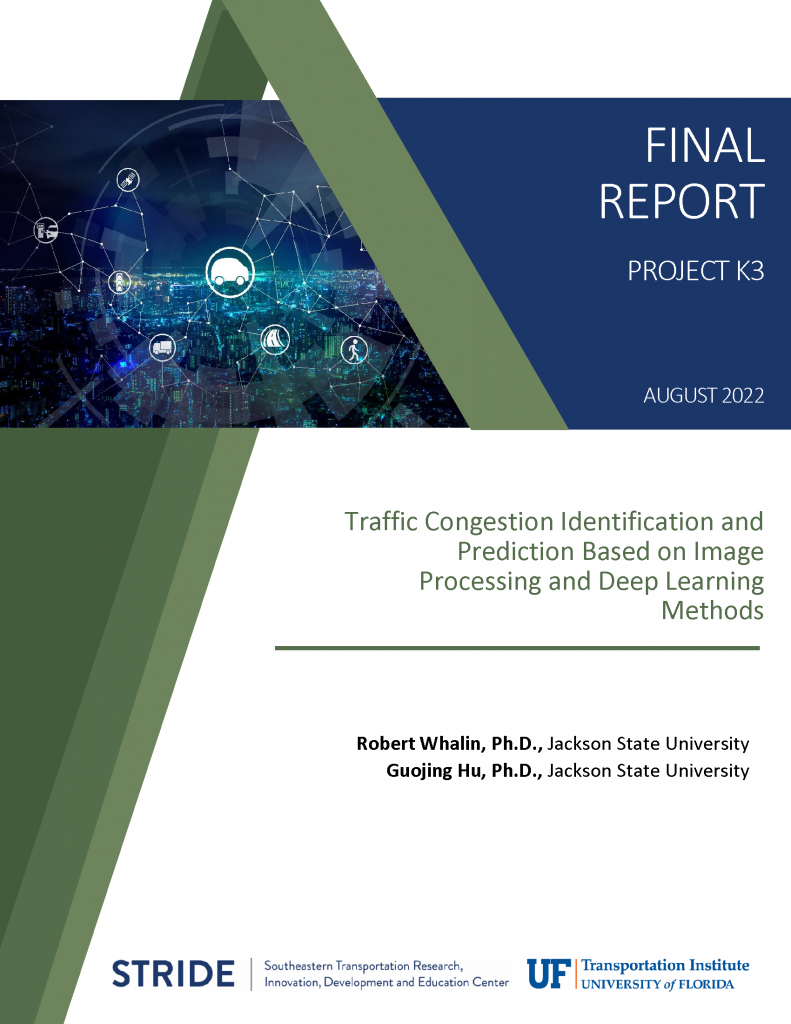Traffic Congestion Identification and Prediction based on Image Processing and Deep Learning Methods
Research Team
Robert Whalin, Ph.D., Jackson State University
Guojing Hu, Ph.D., Jackson State University
UTC Project Info Final Report Technology Transfer Report
Webinar
Abstract: Short-term traffic flow/speed prediction is a significant and challenging research topic as it is closely related to the application of intelligent transportation systems. Due to the variable and random characteristics of the transportation system, raw traffic flow/speed data often contains noise, and predicting it directly may reduce the accuracy and effectiveness of the prediction models. Therefore, a novel hybrid method is established in this project which combines denoising schemes and deep learning model to improve prediction accuracy. The time series denoising schemes include two parts: the complete ensemble empirical mode decomposition with adaptive noise (CEEMDAN), and wavelet packet decomposition (WPD). Firstly, the raw traffic flow data are decomposed by CEEMDAN to gain intrinsic mode functions (IMFs) and a residual. Then the WPD algorithm conducts a secondary decomposition to part of the IMFs that still contains complex and high-frequency component signals of the volume series. Traditional deep learning models for time series prediction are usually based on recurrent neural networks, which have the disadvantages of being time-consuming and prone to problems such as gradient explosions or gradient vanishing. This project uses a relatively new approach, called deep echo state network (DeepESN), which can obtain good prediction results while circumventing the above problems. In the experiment, to investigate the prediction performance of the proposed CEEMDAN-WPD-DeepESN model, the LSTM, CEEMDAN-LSTM, CEEMDAN-WPD-LSTM, DeepESN, CEEMDAN-DeepESN, CEEMDAN-WPD-DeepESN and CEEMDAN-WPD6-DeepESN models are considered to be comparison models.
In addition, network-wide traffic state forecasting is a more challenging task, due to the complex spatial dependencies and the time-varying traffic patterns on road networks. To address this challenge, we treat the traffic network as a graph. Combining graph convolution techniques with deep learning methods to capture the spatial and temporal dependencies of road networks, and eventually improve the prediction performance of network-wide traffic states.
